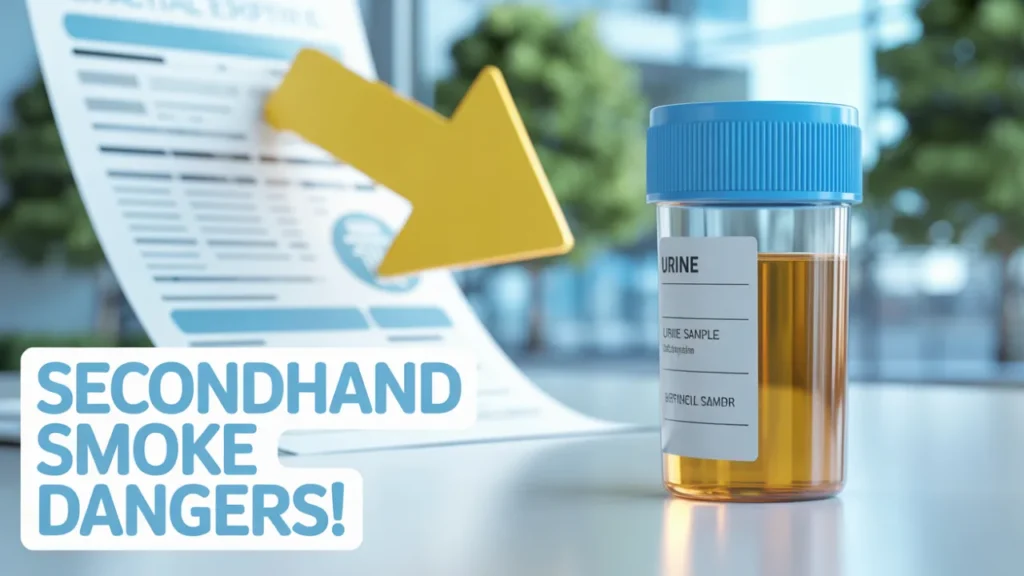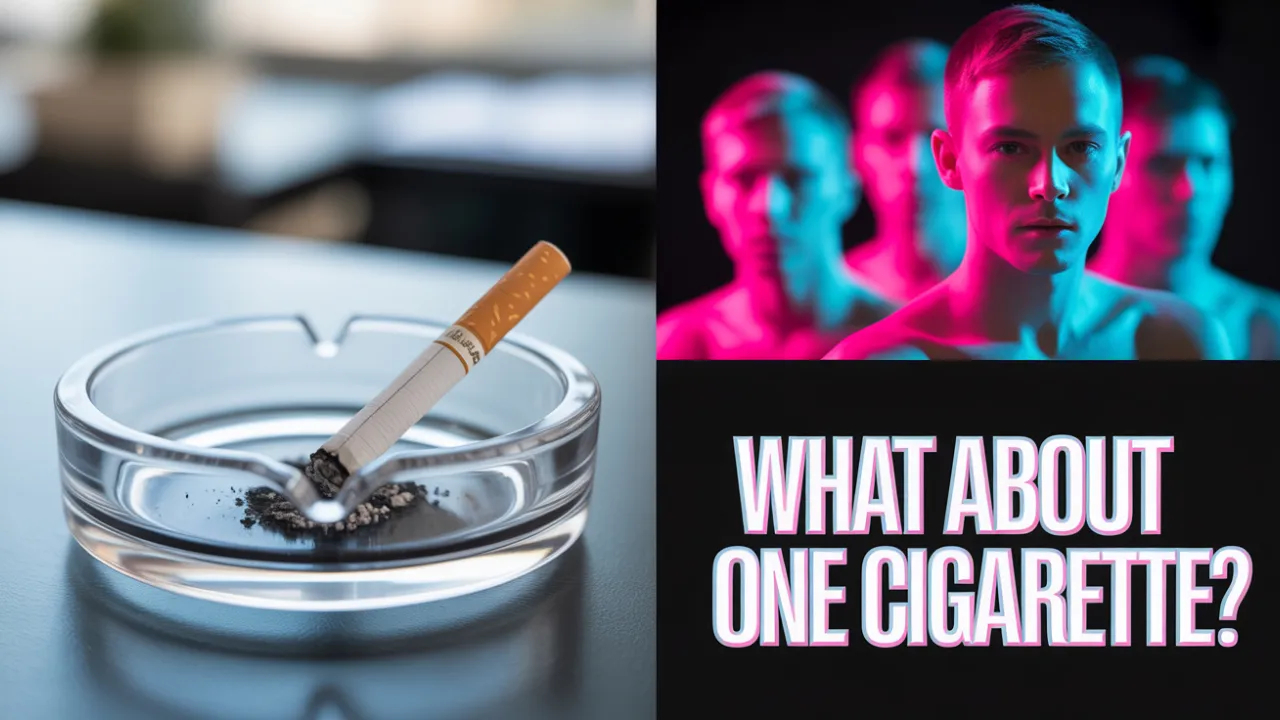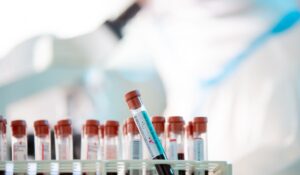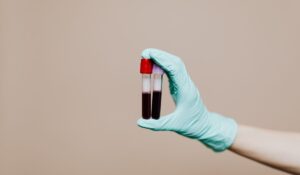Cotinine Levels After 1 Cigarette
At Lynk Diagnostics, we focus on accurate biomarker detection to support health monitoring, disease prevention, and clinical toxicology. One key biomarker we analyze is cotinine, a compound that helps detect tobacco smoke exposure. Even smoking just 1 cigarette can elevate cotinine levels in the body. Understanding this change is vital for smoking cessation, public health studies, and medical assessments.
In this blog, we break down how cotinine reacts to just one cigarette, how it’s measured in blood, urine, and saliva, and how it connects to serious health risks like cancer and chronic obstructive pulmonary disease. We’ll also show how Lynk Diagnostics supports healthcare providers with precise testing tools to detect cotinine.
What Is Cotinine?
Cotinine is the primary biomarker used to detect nicotine exposure. When someone inhales tobacco smoke, the nicotine in the cigarette is quickly broken down by the liver into cotinine.
Cotinine has a longer half-life than nicotine, making it more reliable for detecting tobacco use over time. It stays in the system far longer than nicotine itself.
Medical professionals rely on cotinine tests for everything from verifying smoking status to evaluating health risks for chronic conditions.
How Much Cotinine Appears After 1 Cigarette?
Detectable Rise in Cotinine
Even a single cigarette can trigger measurable cotinine levels in urine, blood, and saliva. One cigarette usually delivers about 1 mg of absorbed nicotine. That small amount gets converted into cotinine within hours.
For someone who doesn’t usually smoke, that one cigarette can lead to cotinine concentrations of:
- Urine: 50–200 ng/mL
- Blood: 1–5 ng/mL
- Saliva: 2–10 ng/mL
These ranges may vary based on metabolism, age, and liver function. But in nearly every case, one cigarette is enough to cause detectable cotinine levels.
How Long Cotinine Stays After 1 Cigarette
The half-life of cotinine is about 16–20 hours, meaning it takes nearly a full day for your body to reduce cotinine levels by half.
After one cigarette:
- Urine can show cotinine for up to 4 days
- Blood levels may return to baseline in 2–3 days
- Saliva typically clears cotinine in 1–4 days
For chronic smokers, cotinine accumulates and can stay much longer. But even for occasional users, cotinine sticks around and provides strong evidence of tobacco exposure.
Tobacco Smoke and the Body: Why Cotinine Matters
Cotinine helps reveal hidden health risks tied to tobacco smoke. Even one cigarette exposes the body to thousands of toxic chemicals.
Immediate Health Effects of One Cigarette
- Blood pressure rises
- Blood vessels constrict
- Heart rate increases
- Lung tissue becomes inflamed
These changes may seem temporary, but they signal harmful reactions throughout the body.
The Centers for Disease Control and Prevention (CDC) confirms that even occasional smoking can lead to long-term health damage.
How Cotinine Is Tested
Lynk Diagnostics uses high-quality testing methods to detect cotinine in urine, saliva, and blood. Each method has different advantages.
Urine Cotinine Testing
Urine tests offer the highest concentration of cotinine, making them ideal for confirming light or recent tobacco exposure.
- Easy to collect
- Can detect cotinine for 2–4 days
- Common in workplace screenings or insurance exams
Saliva Cotinine Testing
Saliva tests are fast and non-invasive. They are especially useful for clinical trials and health surveys.
- Detectable for 1–4 days
- Good for recent exposure
- Used in public health studies
Blood Cotinine Testing
Blood tests are highly precise and are used for deeper clinical evaluation.
- Shorter detection window (1–3 days)
- Used when accurate cotinine levels are critical
- Helpful in toxicology and smoking cessation programs
Lynk Diagnostics offers all three forms of cotinine testing to meet the needs of health providers, labs, and researchers.
Cotinine and Long-Term Disease Risk
Cotinine isn’t just about detecting recent smoke exposure. It’s also tied to understanding long-term disease risk from tobacco.

Cancer Risk from Tobacco Smoke
The National Cancer Institute lists smoking as the leading cause of lung cancer and many other cancers. Cotinine testing provides proof of exposure, even in light or social smokers.
Secondhand smoke, which also produces cotinine in the body, is another serious risk. Detecting cotinine in non-smokers can indicate passive exposure and associated cancer risk.
Cotinine and Chronic Diseases
Cotinine helps predict the likelihood of developing tobacco-related diseases like:
- Chronic Obstructive Pulmonary Disease (COPD)
- Heart Disease
- Peripheral Artery Disease
- Stroke
Lynk Diagnostics supports early detection through cotinine testing, which can flag high-risk individuals before symptoms begin.
Cotinine in Smoking Cessation Programs
Many people trying to quit smoking use cotinine tests to monitor progress. One test can reveal whether nicotine has cleared from the body or if tobacco smoke exposure continues.
Lynk Diagnostics works with addiction recovery centers and physicians to deliver accurate cotinine results that help:
- Validate abstinence
- Track smoking relapse
- Adjust treatment plans
- Motivate behavior change
Testing for cotinine after one cigarette can show a clear return of exposure, helping prevent further smoking.
Cotinine and Public Health Surveillance
The Centers for Disease Control and Prevention and National Cancer Institute use cotinine as a key marker in national tobacco surveys.
By measuring cotinine in large populations, agencies can:
- Estimate true smoking rates
- Measure secondhand smoke exposure
- Guide anti-smoking policies
- Target public health messaging
At Lynk Diagnostics, we support researchers with bulk cotinine testing for epidemiological use. Our services help build reliable health data that informs national strategies to reduce smoking-related illness.
Cotinine in Youth and Secondhand Smoke Detection
Even one cigarette can raise cotinine in teenagers and young adults. But it also shows up in non-smokers who inhale secondhand tobacco smoke.
Children and Cotinine
Young children exposed to smoke from parents or caregivers often show cotinine in their blood or urine.
This is deeply concerning because:
- Their lungs are still developing
- Their risk of asthma, ear infections, and lung infections increases
- They may face higher chances of becoming smokers later
Health providers use cotinine levels to detect secondhand exposure and intervene early.
Why Cotinine Testing Is Better Than Self-Reporting
Self-reported smoking habits are often unreliable. People may under-report their smoking, especially in clinical settings.
Cotinine testing offers:
- Objective confirmation
- High accuracy
- Long detection windows
It can detect even one cigarette and verify claims of abstinence or low use. Lynk Diagnostics empowers providers and employers with cotinine testing that gives clear, actionable answers.
Cotinine vs. Other Biomarkers of Tobacco Exposure
Cotinine is the gold standard for nicotine detection. Other biomarkers exist but are either too short-lived or less accurate.
Why Cotinine Is Preferred
- Stable: Lingers in the body longer than nicotine
- Reliable: Directly tied to the amount of nicotine absorbed
- Specific: Doesn’t appear in the body unless there’s nicotine exposure
Other options like anabasine or nicotine itself are harder to measure and clear too quickly to be useful for most testing.
Cotinine in E-Cigarettes and Nicotine Products
Even if someone doesn’t smoke a cigarette, using e-cigarettes or nicotine gum will still produce cotinine.
The source of nicotine—whether from traditional tobacco smoke, vaping, or smokeless tobacco—does not matter. If nicotine enters the body, cotinine will follow.
Lynk Diagnostics’ testing panels can help determine whether nicotine exposure came from smoking or alternative sources using secondary biomarkers.
Conclusion: Cotinine After One Cigarette—Why It Matters
Even one cigarette can create measurable cotinine levels in urine, blood, and saliva. This biomarker gives crucial insight into tobacco smoke exposure, health risk, and disease prediction.
At Lynk Diagnostics, we provide accurate cotinine testing for healthcare providers, employers, and research institutions. Whether you’re monitoring lung cancer risk, checking for chronic obstructive pulmonary disease, or helping someone quit, cotinine testing is essential.
To learn more about our urine drug test cups and toxicology solutions, visit Lynk Diagnostics. Let us help you take the guesswork out of exposure detection.
FAQs
How long is cotinine detectable after one cigarette?
Cotinine is typically detectable for 1 to 4 days after smoking one cigarette. In urine, it can remain for up to 4 days, while blood and saliva may clear it within 1 to 3 days, depending on metabolism.
How much does one cigarette raise cotinine levels?
One cigarette can raise cotinine levels to measurable concentrations even in first-time or occasional users. On average:
Urine: 50–200 ng/mL
Blood: 1–5 ng/mL
Saliva: 2–10 ng/mL
The exact increase depends on individual metabolism and nicotine absorption rate.
Will one cigarette make you fail a nicotine test?
Yes, one cigarette can cause you to fail a nicotine or cotinine test. Most tests have cut-off levels as low as 10–14 ng/mL in saliva or urine. One cigarette can elevate levels past that threshold, especially if the test uses sensitive detection methods like EIA or GC-MS.
What is the cut-off for a cotinine test?
Typical cut-off levels for cotinine detection are:
Urine: 200 ng/mL
Saliva: 10–14 ng/mL
Blood: 10 ng/mL
However, labs may adjust thresholds depending on the population and purpose (e.g., workplace, clinical, or insurance testing). According to the National Cancer Institute and CDC, some guidelines recommend 3–10 ng/mL to distinguish non-smokers from light smokers or those exposed to secondhand tobacco smoke.








